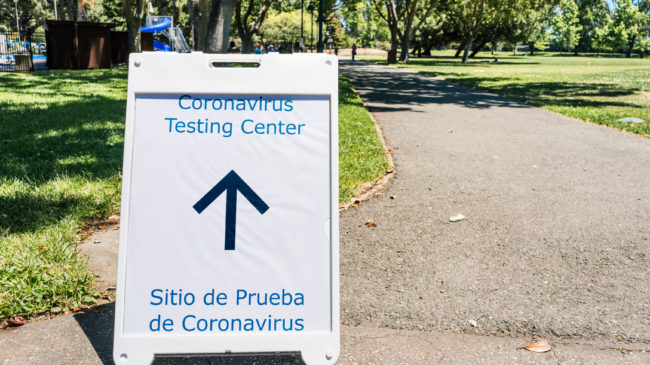As California counties start to loosen their stay-at-home policies and go through the phases of re-opening, they should look at the experience of Northern European countries that have been significantly and successfully relaxing restrictions over the last several weeks.
These countries have been able to reopen schools and retail businesses without triggering unmanageable spikes in COVID-19 hospitalizations.
Denmark offers the most striking example. After implementing an early and strict shelter-in-place order on March 11, before any coronavirus-related deaths in the country, it began a phased relaxation in mid-April. Denmark has now reopened a wide array of facilities including schools, restaurants, shopping malls, and is allowing public gatherings of up to 50 people.
Meanwhile, the total number of Danes hospitalized due to COVID-19 has continued to decline, falling below 200 recently after peaking above 500 in early April— in a nation of 5.8 million people, a bit less than live in the Bay Area.
Other nations that have been steadily opening schools and business establishments include Norway, Austria, and the Czech Republic. Among larger European countries, Germany has been relaxing restrictions fastest, even allowing the resumption of professional soccer—without fans in stadiums last month.
Reopening in Northern Europe has not been accompanied by large outbreaks for various reasons. Denmark is offering coronavirus testing to every citizen. Germany has utilized contact tracing to limit outbreaks. When establishments began their re-openings, they allowed fewer customers and required social distancing and use of face masks. But another possibility is that places like schools and stores, which reopened quickly, were never the primary sources of deadly contagion.
In contrast to California’s schools being shut down, Denmark swiftly reopened schools and is holding many classes outside where the coronavirus doesn’t spread as easily. Anecdotal evidence suggests that the haphazard, unplanned shift to online learning across California has produced mixed results, with low-income children dealing with the largest access problems and facing the worst learning outcomes.
Among the worst coronavirus outbreaks the US has seen have been in nursing homes, where there is extended physical contact between residents and caregivers, and in meatpacking plants, where workers are close to one another and temperatures are kept artificially low.
Other places that the virus seems to spread include homes, hospitals, buses, and trains – none of which were subject to the state’s lockdowns.
Similarly, California’s supermarkets, hardware stores, and places like Target and Walmart remained open throughout the lockdowns. In other US states, hair salons, fitness facilities and other businesses opened without major spikes in hospitalizations.
The move to reopen has been fastest in red states, which, unfortunately, helped fan a counterproductive political divide over public health policy. And President Trump, who has pushed a variety of conspiracy theories and recently accused a reporter of trying to be “politically correct” because he left his mask on while asking Trump a question, helped politicize nearly everything surrounding the coronavirus pandemic.
In contrast, in Northern European countries the relaxation of lockdowns enjoyed cross-party support. Leaders from across the political spectrum worked together to find ways to balance the imperatives of retaining jobs and businesses, minimizing social isolation, and keeping the virus in check.
It has been weeks since California successfully flattened the coronavirus curve. The goal was never to get cases down to zero, but to ensure hospitals and the health care system weren’t overwhelmed.
As the overall number of coronavirus cases continues to grow in the weeks ahead, it is important to note that in addition to public health priorities, the shutdowns and limitations need to be judged on their potential harms to school children, workers, and small businesses — all of whom are suffering. And that places like Denmark show it is possible to take a balanced approach that substantially reopens the economy without a spike in COVID-19 hospitalizations or deaths.
A version of this column first appeared in the Orange County Register.

